
|
|
|
|
BY: SUN STAFF
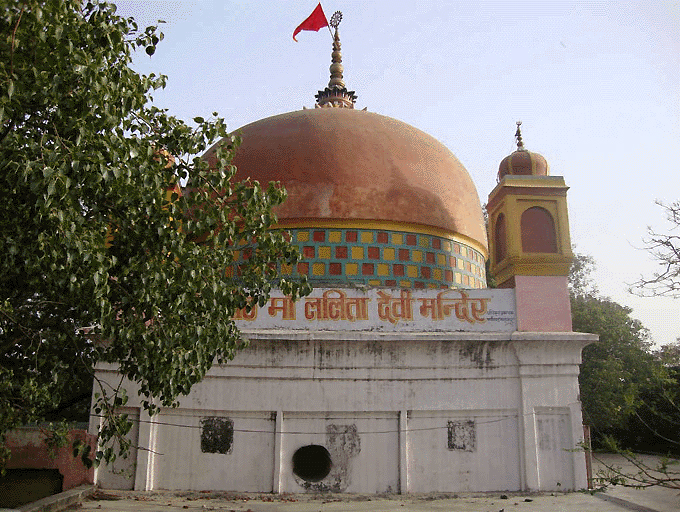
Ma Lalita Devi Temple Jan 10, CANADA (SUN) — A serial exploration of the sacred Tirtha at Naimisharanya. In our first segment of this series, we featured one of the most famous holy sites at Naimisharanya Dhama – the Chakra Kunda at Chakra Teerath. Chakra Kunda was created at the junction of Dvarpa and Kali yugas, when 88,000 great sages headed by Saunaka Rishi gathered here to hold a yajna to offset the impending effects of Kali yuga. They were led to this place by Lord Brahma's great chakra, which split the earth open at Naimisharanya to mark the Holy Dhama.
Chakra-tirtha is considered to be the center of the very universe, and the large sweet-water spring that feeds into Chakra Kunda is bottomless. It is said that the British wanted to disprove this 'mythology', so they dropped a great cable into the kunda, attempting to find the bottom. After the cable had descended to 3,300 feet without hitting bottom, they gave up.
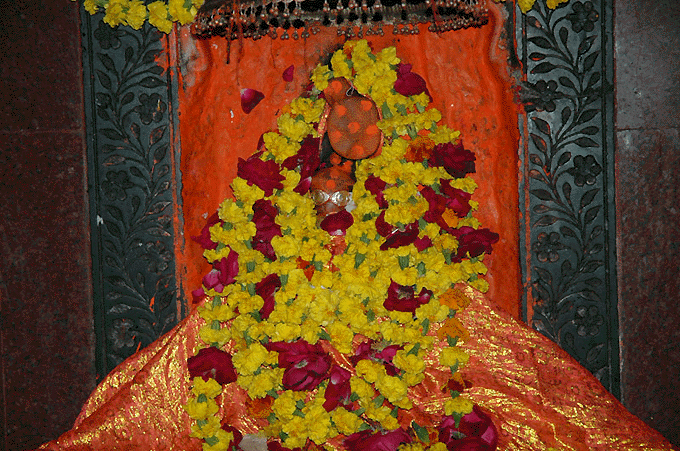
Maa Lingdharini Lalita Devi at Naimisharanya As described in the first segment, it was Lalita Ma, a manifestation of Shakti Devi, who appeared at Naimisharanya to protect the Devatas, and to stop the water that gushed from the earth where Lord Brahma's Manomaya Chakra cracked it open.
Maa Lingdharini Lalita Devi is worshipped here at her temple abode, which is one of the chief temples at Naimisharanya. Before visiting Devi's abode, devotees take holy bath at the Chakra Kunda. Many come to make a special offering of the parasol to her.
Although Naimisharanya was an established Vaisnava dhama, with the arrival of Adi Shankaracarya the Adhishakti Peeta of Lalita Maa was established, making the place an important shaktipeeth for Saivites. Adi Shankar offered worship to Lalita Devi by reciting the now famous stotra, 'Lalita Panchakam', dedicated to the Shaiva deity, Maa Lingdharini Lalita.
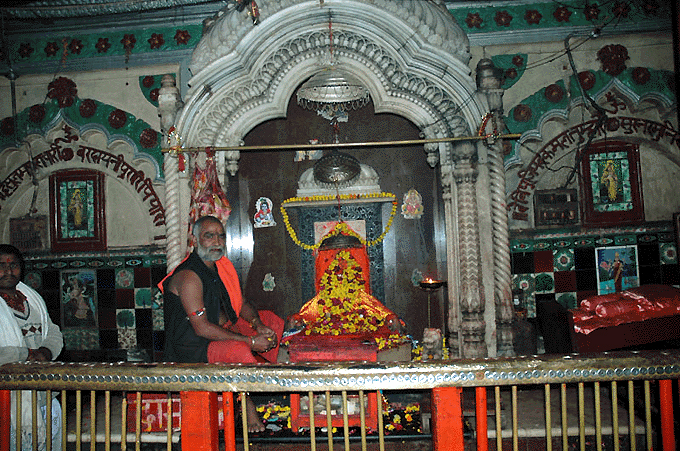
Lalita Devi's Temple Lord Visnu is worshipped as Devarajan (Sree Hari), with his consort Pundarikavalli (Hari-laksmi) at their Naimisharanya abode, Sree Balaji Temple. Nearby Lalita Devi's temple is the famous Panch Prayag theertham, which is no doubt a manifestation of the combined water of the five sacred rivers nearby: the Godavar, Kasi, Gangotri, Gomati, and Gomukhi rivers. But of them all, Chakra Kunda is the most prominent theertham. Taking holy bath in the Kunda on Somavati Amavasya is considered to purify one of all sins.
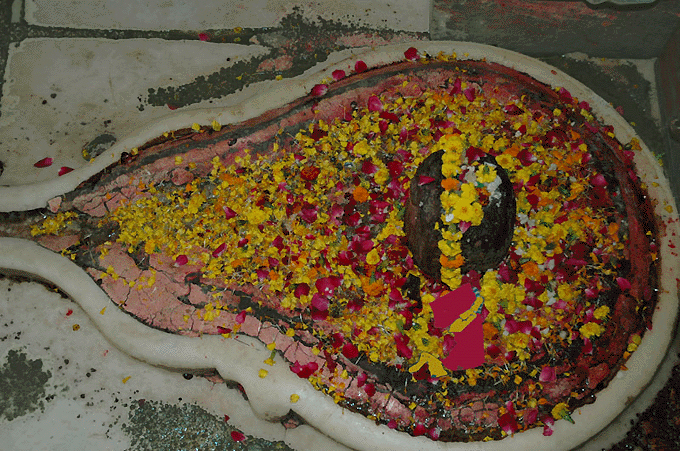
Lalita Ma Lingam The 16th century manuscript, Ain I Akbari (Institutes of Akbar), describes the Chakra Kunda, referring to it as the Bhramavartakundh Tank. It describes the theertham as having a natural stream and a strong current, which ejects anything thrown into it. It also says that the sand takes the natural shape of Shiva. (The sand was presumably present before the kunda's cement steps were built.)
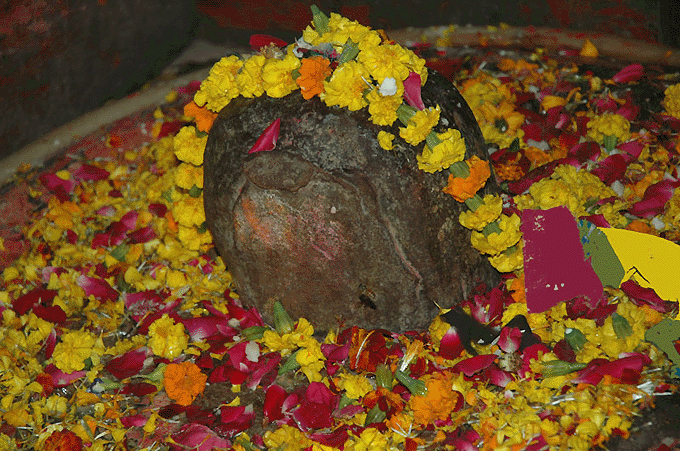
Panch Prayag Theertham Naimisharanya on the map
One Sun reader pointed out the fact that Google maps do not provide a searchable locator for the position of Naimisharanya in Uttar Pradesh. You will find an exact locator for the Dhama here, at Maplandia.com. Once you've visually pinpointed the site, which is located in Hardoi district, southwest of Sitapur, you can easily map to it in Google maps.
Specifically, Naimisharanya is located at the junction of the roads from Sitapur and Khairabad, 20 miles from Sitapur and 24 miles from the Sandila railway station. Naimisharanya is known locally as Nimsar or Nimkhar, and sits on the left bank of the River Gomati.
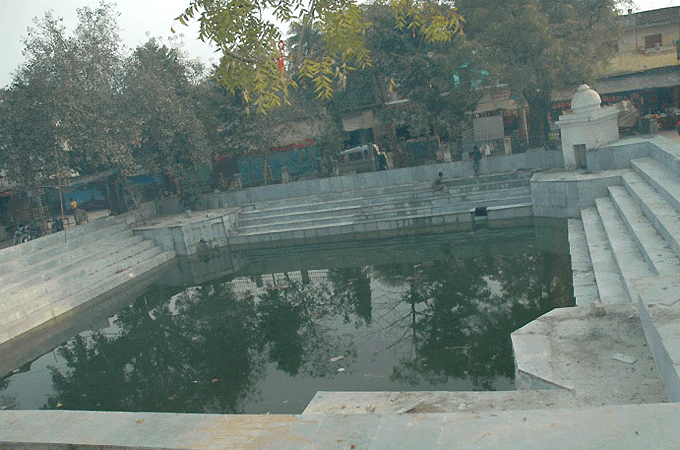
Panch Prayag Theertham Some photos courtesy of Naimish Trust.
| |